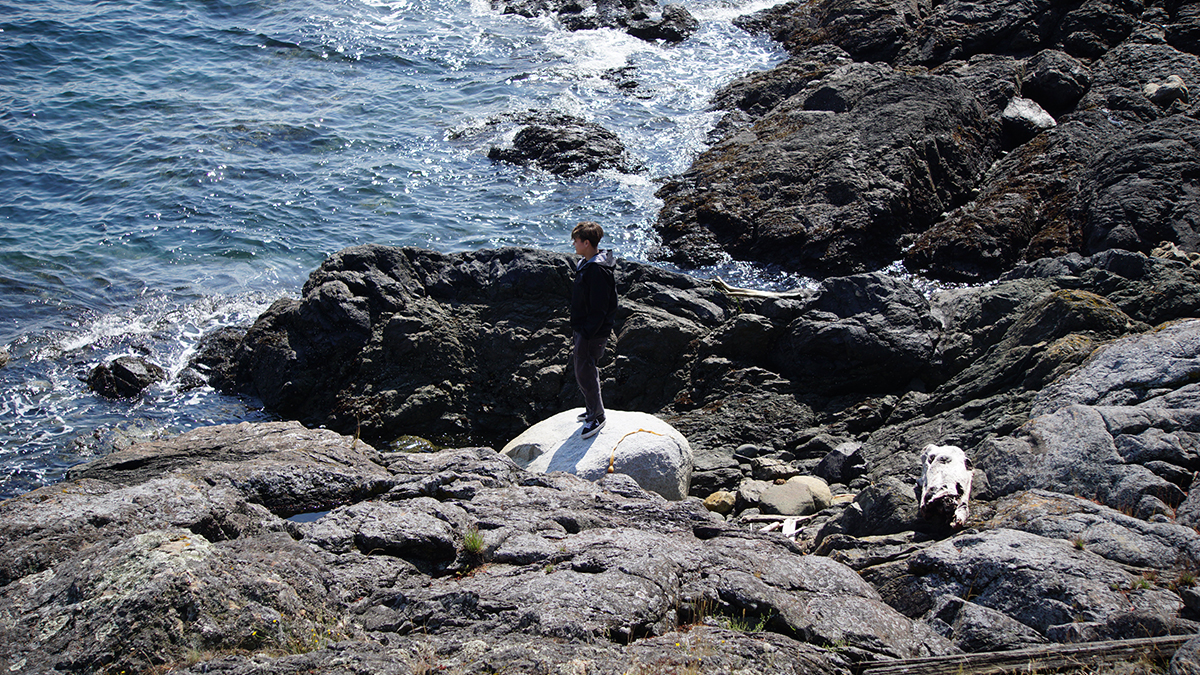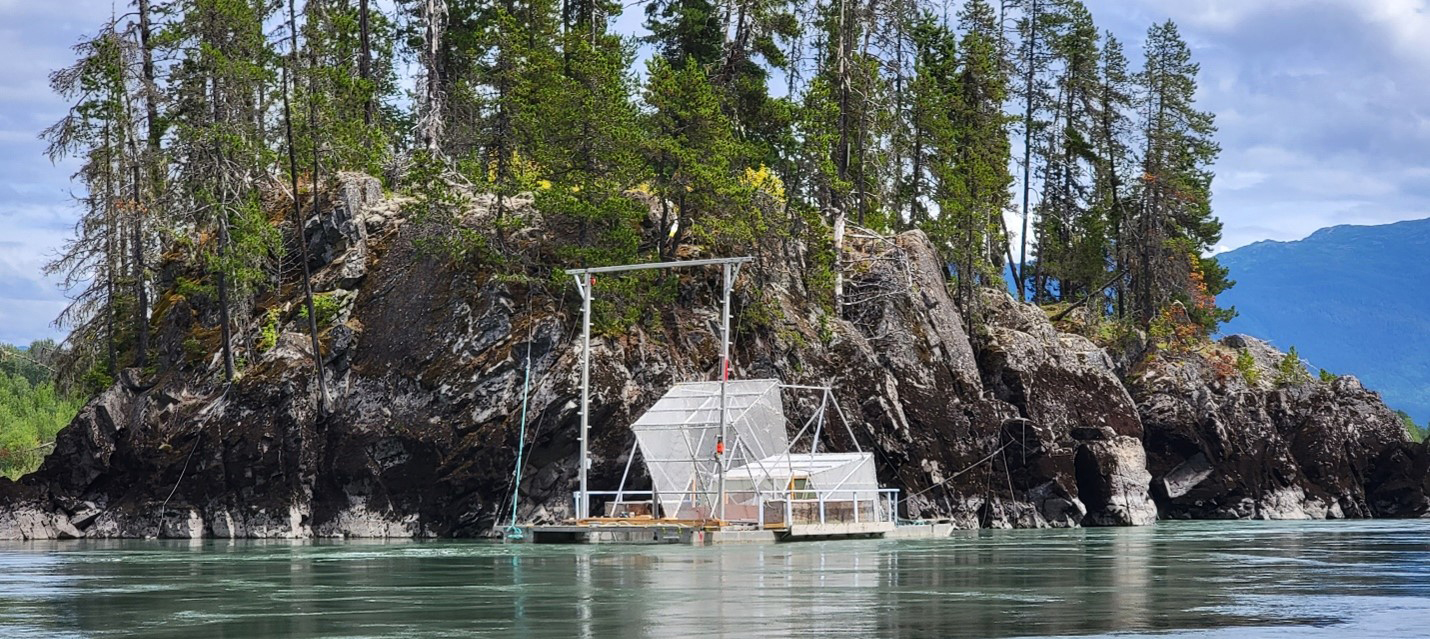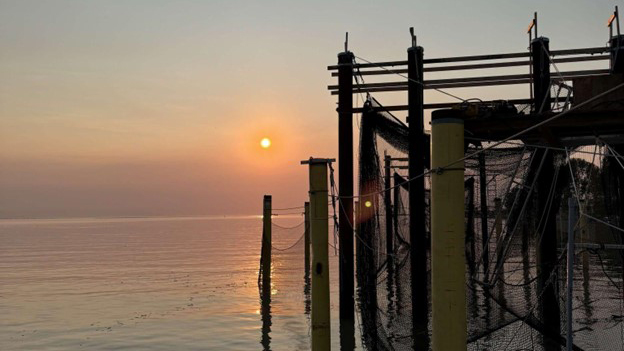Collaborating with First Nations in B.C. and Yukon to support sustainable Pacific salmon harvesting
Over the years, persistent and significant Pacific salmon declines across several species, populations and stocks have resulted in an overall reduction in abundance and associated decreasing salmon harvesting opportunity, including First Nations harvesting for food, social and ceremonial fishery harvest. Pacific salmon play a vital role in our marine and freshwater ecosystems, and have significant cultural, social and ecological importance to many Indigenous Peoples and Canadians. First Nations in B.C. and the Yukon have an enduring connection with Pacific salmon and we are working together to ensure that this valuable resource is preserved for future generations.
Under the Pacific Salmon Strategy Initiative (PSSI), we are collaborating and working closely with over 40 First Nations and Indigenous fisheries organizations on more than 60 Indigenous Harvest Transformation partnership projects to increase sustainable fishing opportunities while reducing impacts on vulnerable salmon stocks. The projects focus on three key areas: transitioning to more selective fishing methods for food, social, and ceremonial purposes; developing new and innovative fishing opportunities; and improving fishery monitoring and catch reporting for Indigenous fisheries.
Together, these selective salmon harvesting projects support sustainable Indigenous fishing opportunities wherever possible given the decline of Pacific salmon. Collaborative implementation of the Pacific Salmon Strategy Initiative and an effort to provide predictable and flexible capacity funding supports implementation of the United Nations Declaration on the Rights of Indigenous Peoples Act Action Plan.
Reef net revitalization project, SȾÁUTW̱ First Nation

SȾÁUTW̱ (Tsawout) First Nation youth, Elders and fisheries staff met with Lummi Nation members in March 2024 to observe their reef net fishery and learn about its history and practices. A youth from SȾÁUTW̱ is shown here observing the Lummi Nation reef net fishery from the shores of the San Juan Islands in the Salish Sea.
SȾÁUTW̱ (Tsawout) First Nation is currently leading a multi-year initiative to revitalize reef net fishing in coastal areas along the Saanich Peninsula. Reef netting is a highly selective harvesting method with a low environmental impact compared to other fishing methods, and low mortality rates for released fish. SȾÁUTW̱ First Nation was unable to legally practice this traditional fishing method for over a century due to federal legislative changes banning the practice in 1916. As a result, much of the cultural and technical knowledge previous generations held has been lost.
Current efforts are focused on researching traditional methods, learning present-day practices and acquiring appropriate fishing equipment, including building canoes. SȾÁUTW̱ First Nation youth, elders and fisheries staff have been meeting with members of Lummi Nation, located in Washington State, for guidance on traditional and modern reef net fishing practices. This initiative will re-establish a viable and culturally significant reef net fishery that will revive generational knowledge and bring members of the SȾÁUTW̱ First Nation community together.
“ SȾÁUTW̱ (Tsawout) First Nation’s fisheries team received invaluable assistance from Elders of the Lummi Nation in Washington State, with whom SȾÁUTW̱ shares close family ties. Traditionally, families across the Salish Sea used reef net sites together, off the Saanich Peninsula and among the San Juan Islands. We are very excited to bring reef nets back to the shores of the Saanich Peninsula, viewing this as a crucial step in realizing our hopes and dreams for the next 7 generations to one day celebrate reef net fishery and our ancestral communal harvesting sites, in unity with our families across the border.”
– Jennifer Claxton, Reef Net Revitalization Project Coordinator
Fishwheel project, Kitsumkalum First Nation

Kitsumkalum’s fishwheel at Hells Gate on the Skeena River, near the Kitsumkalum community in Terrace, B.C.
Through PSSI, we have provided multi-year funding to the Kitsumkalum First Nation to construct a fishwheel and operate it at a location in Hells Gate on the Skeena River, in the North Coast area. Fishwheels turn using river currents and when placed in the correct location work well to catch all species of salmon, harvest target species, and return non-targeted fish to the river unharmed. The Kitsumkalum First Nation’s fishwheel has been successful in selectively harvesting specific salmon species for the Kitsumkalum First Nation’s food, social and ceremonial needs, while releasing other species unharmed since 2023.
Sockeye salmon weir, Heiltsuk Nation

The Heiltsuk seasonal weir in operation on the Koeye River directs salmon and fish to a holding area for counting and monitoring.
Heiltsuk Nation has successfully installed a weir in the Koeye River on the central coast of British Columbia to monitor Sockeye salmon numbers swimming upstream. We have committed multi-year funding through PSSI to support Heiltsuk Nation in Bella Bella to rebuild terminal salmon fisheries using weirs in Heiltsuk territory. The use of weirs is a traditional salmon fishing method used by First Nations in rivers. Weirs, likened to a fence installed in the river, allow water to flow through while temporarily holding back salmon swimming upstream for monitoring purposes and selective harvest when possible. By obtaining more accurate counts of salmon, Heiltsuk Nation has been able to selectively harvest Sockeye salmon for food, social and ceremonial purposes. With the success of their initial weir, an additional weir is now in development.
Tidal water salmon trap, Tsawwassen First Nation

The Tsawwassen fish trap located near the mouth of the Fraser River in Metro Vancouver enables Tsawwassen First Nation to selectively harvest salmon.
As a Nation with a rich history deeply rooted in the land and marine resources, Tsawwassen First Nation (TFN) holds a strong connection to the conservation of Pacific salmon stocks. Tsawwassen First Nation has been developing a tidal water salmon fishery close to their traditional fishing site near the mouth of the Fraser River in southern Metro Vancouver and we have provided multi-year support under PSSI and the British Columbia Salmon Restoration and Innovation Fund (BCSRIF). Our support has helped TFN identify a suitable fish trap site, as well as to build and operate the trap to explore the sustainability of selectively catching Chinook, coho and sockeye salmon.
The TFN fish trap consists of installing temporary netting on permanent pilings installed in an area of the lower Fraser River to direct adult Pacific salmon to a smaller holding area as they begin their journey back from the Pacific Ocean to reproduce. The use of a fish trap in tidal waters revives a First Nations fishing method that was banned in the area in the early 20th century and enables Tsawwassen First Nation today to selectively harvest salmon and release vulnerable and non-targeted species unharmed.
- Date modified: